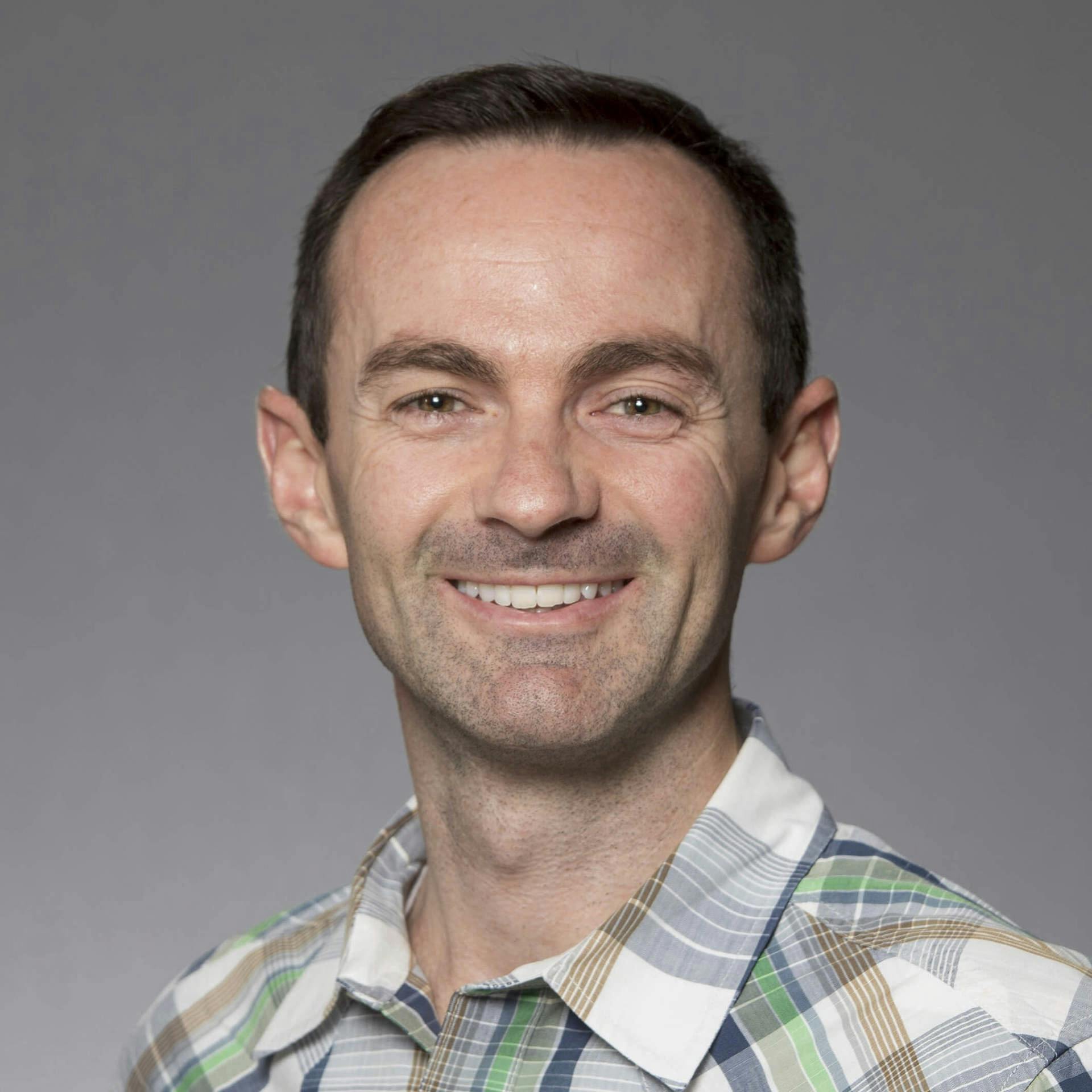Instead of a manual inspection, his company allows contractors to tour a job site with a 360-degree video that documents ongoing work with the help of AI.
2022.04.29

500 Global Team

Picture courtesy of StructionSite
Finishing a construction project on time and on budget can be an elusive pursuit. Matt Daly and Philip Lorenzo know this well from having walked around job sites with nothing more than a set of paper drawings and a highlighter to keep track of progress.
Their company StructionSite is now helping to digitize a trillion dollar industry, by enabling customers–typically trade contractors–to inspect a job site with a 360-degree video that documents ongoing work with the help of AI.
“There was a period of time when the very common phrase would be, ‘if it ain’t broke, don’t fix it.’ I don’t think that’s the case anymore,” he says. Matt joins us on our podcast Rise of the Next to talk about how the construction business is changing.
Subscribe here to episodes of Rise of the Next on major streaming platforms.
TRANSCRIPT
Shereen Abdulla
Matt, welcome to the show.
Matt Daly
Thanks for having me.
MATT’S BACKGROUND AND WHY HE BUILT STRUCTIONSITE
Shereen Abdulla
My absolute pleasure. I’d love to start by asking you to please tell us about your background. What inspired you to create StructionSite and what problems are you looking to solve?
Matt Daly
Well, that’s three questions, let’s start with the first one. My background — that would be a mechanical engineer by education, but not much more than that. I quickly realized out of college that I was never going to be the best mechanical engineer. So, I ended up going to work for a company called Faro Technologies and I went into sales. I had tried to find something that I think would be a better fit for me. So, yeah, I worked for nine years for a company — this company makes 3D imaging and measurement products, mostly for aerospace and automotive manufacturers. So, I spent the first nine years out of college working with that company. That company launched a table LiDAR scanner that scans buildings, and I remember my boss looking at me and being like, “This thing looks like a game-changer, you should probably get on this.” And so, I did, but it was a pretty big shift for me; it went from you’re wandering around a manufacturing plant at a Boeing or a Tesla facility with robots everywhere, and then, all of a sudden, you’re on a job site talking to contractors — and things are a lot different. So, yeah, that was my background, in a nutshell, and how we got started. I actually met my Co-founder Philip on a job site, very close to where I’m at, here in Northern California today.
THE PROBLEMS THAT STRUCTIONSITE ADDRESSES
Shereen Abdulla
And what problems did you guys observe whilst being on-ground that inspired you to create StructionSite?
Matt Daly
So, the problems that we saw on the ground — so when I met my Co-founder Philip at a job site, here in the Bay Area, it was basically him walking around with a set of paper drawings and a highlighter, manually marking down stuff that had been installed so that he could track the progress on the job for certain trades. And so, I think, for him, it was pretty obvious: there has to be a better way to do this; there’s so much work going on the job site right now, is there a better way we can use some of this new reality capture technology to automate the thing that I’m doing manually right now?
Shereen Abdulla
In addition to automating something that was pretty manual at the time, were there other operational errors that were also appearing in the process that would have been a pain point that you were looking to solve?
Matt Daly
Yeah, there can be a lot when you’re miscommunicating about what work is happening, where and what is complete and what is not, that can lead to all sorts of different issues, including the trades, maybe, stacking up in certain areas, which tends to lead to quality issues. I think there was a quote from one of our customers who is using our tracking product that’s like: if you are 10% off on your understanding (as a trade contractor, especially), you’re 10% off on your understanding of progress. That might be — your entire profit margin might be — you thought you were 80% done, but you were really 65% done and now you’ve lost money on this project because you get to the end and you still have to finish it, but your budget’s gone. And so, not understanding what your progress is, can impact anything from the schedule to the budget.
HOW STRUCTIONSITE WORKS
Shereen Abdulla
So, effectively, StructionSite makes construction projects more productive and cost-efficient; but how does this technology actually work?
Matt Daly
There are a couple of pieces of it. The first experience a user has is they’re connecting a consumer-grade 360 camera to their phone or iPad, or some sort of mobile device, and they walk around recording a video. And so, some of the tech behind-the-scenes is very similar to what you would see in a self-driving car — it’s using a form of SLAM, which is simultaneous localization and mapping, which is basically just a fancy way of saying we can automatically put the images on the floor plan in the correct spot. So, you’re basically using a form of AI to automatically place the data on the floor plan with them, and in a second part of that process, the software is then using some of that same vision technology to be able to understand what’s in the imagery relative to what is in the plant.
THE CURRENT STATE OF TECH DISTRUPTION IN THE CONSTRUCTION INDUSTRY
Shereen Abdulla
Given that the construction is about a trillion-dollar industry, has it, as a whole, been resistant to technology?
Matt Daly
Yeah, I think this is a really common thing that the industry has gotten beaten up for a long time about, being behind and laggards. I think there was certainly a period of time where the very common phrase would be, “If it ain’t broke, don’t fix it” — not really interested in change. I don’t think that’s the case anymore. This is now an industry that has a generation of people that are super excited for change and are looking for it. So, yes, they are behind us. We, as an industry, and construction are behind, but we’re at that point right now where it’s changing and there’s a real appetite for new technologies and new things that can improve the way we build.
Shereen Abdulla
And what’s driving the change?
Matt Daly
There are so many things driving the change. There’s a couple of major macro things that are driving that, including — we’re all feeling a housing crisis right now, there are not enough houses, there are not enough places for people, we’re not building enough; and so, that leads to asset prices going up. And because there’s a scarcity thing, there’s a labor issue. This industry has a really hard time attracting talent because it’s just notorious that people don’t — you don’t go to college and decide you want to go out and be a builder. In a lot of places, there are some really amazing construction management schools that are producing some very, very talented people; but, they’re not enough. And so, those are some of the macro industry challenges.
Shereen Abdulla
What about the pandemic, how has that affected things?
Matt Daly
That has had a number of impacts, including some good and some bad. I think, in some ways, it really drove a lot of people, or some of the industry, to start adopting technology. You didn’t have a choice, you really had to look at a tool like StructionSite to be able to say, “I can’t send everybody safely to the job site, how do I minimize the number of people and manage this thing remotely?” Well, you might look at a solution to do that. But, it’s also created a lot of problems. There are major supply chain issues that impact the delivery of materials to job sites, which, then, of course, delay projects. So, there’s still a latent challenge that exists, as far as actually getting materials to job sites today.
Shereen Abdulla
And what are some of the trends that you’re observing in terms of tech change within the industry?
Matt Daly
There’s a lot. As far as the stuff that we think about the most, and that we’re probably watching the most closely, is autonomous indoor navigation. What that means is being able to — a robot, of some sort, flying, walking, whatever, being able to navigate inside of a building when you don’t have GPS. We can see things navigating outside all the time because you have access to GPS and a positioning system. You don’t have that inside of a building; you go inside of a building, there’s no more GPS. And so, how do you navigate inside of that thing and know where you’re going? For us, that’s important because that unlocks a flow of data that — right now we have to rely on humans to walk around and capture this information, which is more time and more energy and on job sites that are already short of people. That can be a heavy lift sometimes. So, yeah, that’s probably the one that we’re watching most closely. Companies like Boston Dynamics have really made some pretty incredible inroads. Having a robot that can reliably and autonomously walk around a job site, that’s got rebar sticking up and wires hanging down from the ceiling and other sorts of things that might be really difficult for any other autonomous system.
MATT ON CHALLENGES
Shereen Abdulla
What challenges have you faced, particularly, when it comes to winning over clients?
Matt Daly
Some of the first challenges are just related to bandwidth on the team. I mean, again, these are businesses that are operating sometimes between a 3 and a 5 percent profit margin. So, on a razor-thin margin, how do you have staff on your team who are dedicated to evaluating and looking at technology and making sure that you’re being thoughtful about even trying new things? And so, that’s probably one of the biggest challenges, just for our customers, is having people who can help with this process. Otherwise, it’s just everybody that’s on a project who’s dedicated to building and delivering that project and not necessarily focused on the broader technology that might be available to them. That’s probably one of the — almost all the challenges come down to not enough people to do a lot of work for us. For us, one of the things that I think, well, any good SaaS business does, is build up your own muscles internally with the customer success team, with an implementation team, and just show them what the process can look like, and how we can support them through that, and how they’re not alone. It’s not on them — just by themselves. We are here with them as a partner in that process, and we’ve done it before, and here’s the playbook for how we’re going to get you from where you are today to where you want to be using a solution like this.
HOW STRUCTIONSITE BENEFITS ITS CUSTOMERS
Shereen Abdulla
Are you able to share an example of a customer that you’ve worked with, and perhaps also shed some numbers on the efficiencies that you helped them achieve?
Matt Daly
Yeah, absolutely. So, we’re always hearing stories from our customers. I’ve got one project that’s definitely near and dear to our hearts because it was close to us here in the Bay Area. It was the Chase Center, and that was a joint venture of a $1.3 billion job; three million square feet. It was a joint venture between Clark and Mortenson. And one of the — a job like that, at some point on the job you’ve got 2,000 people you’re coordinating on a job site, every single day and just a ton of people — and we’re spending up to eight hours, having somebody walk around and take pictures, capture what’s happening on the job site so that other stakeholders who maybe weren’t on the job site could understand what was going on and coordinate the work. We were able to cut that process down to a two-hour video walk for them; so, we’re basically, giving them a 4x improvement in the amount of time it takes them to capture data. We’re also giving them much better data that their senior superintendent was excited to use as a communication tool with their client when they’re trying to talk about the status of the project and how things are going. We became one of the tools they were using to communicate progress to their client.
WHAT’S NEXT FOR STRUCTIONSITE
Shereen Abdulla
Matt, what’s next for the company?
Matt Daly
We’re building this business in a couple of phases. We spent the first couple of years really focusing on digitizing things and getting that digital record going. The phase we’re in is really about tracking and being able to take that data from that first phase [to] deliver more information to our customers about how progress is happening here, how it’s happening there, [and] different trades that we can track. So, yeah, we’re really focused on tracking, and anything that helps us automate the capture processes is always interesting, too. We’ll be keeping a close eye on that.
Shereen Abdulla
Matt, thank you very much for your time.
Matt Daly
Likewise. Great to meet you. Thanks for having me.
Shereen Abdulla
My absolute pleasure.
THIS PODCAST IS INTENDED SOLELY FOR GENERAL INFORMATIONAL OR EDUCATIONAL PURPOSES ONLY. UNDER NO CIRCUMSTANCES SHOULD ANY CONTENT PROVIDED AS PART OF ANY SUCH PROGRAMS, SERVICES OR EVENTS BE CONSTRUED AS INVESTMENT, LEGAL, TAX OR ACCOUNTING ADVICE BY 500 STARTUPS MANAGEMENT COMPANY, L.L.C. OR ANY OF ITS AFFILIATES (“500 GLOBAL”). 500 GLOBAL MAKES NO REPRESENTATION AS TO THE ACCURACY OR INFORMATION IN THIS PODCAST AND WHILE REASONABLE STEPS HAVE BEEN TAKEN TO ENSURE THAT THE INFORMATION HEREIN IS ACCURATE AND UP-TO-DATE, NO LIABILITY CAN BE ACCEPTED FOR ANY ERROR OR OMISSIONS AND 500 GLOBAL ACCEPTS NO RESPONSIBILITY FOR ANY LOSS WHICH MAY ARISE FROM RELIANCE ON THE INFORMATION IN THIS PODCAST. UNDER NO CIRCUMSTANCES SHOULD ANY INFORMATION OR CONTENT IN THIS PODCAST, BE CONSIDERED AS AN OFFER TO SELL OR SOLICITATION OF INTEREST TO PURCHASE ANY SECURITIES ADVISED BY 500 GLOBAL OR ANY OF ITS AFFILIATES OR REPRESENTATIVES. FURTHER, NO CONTENT OR INFORMATION IN THIS PODCAST IS INTENDED AS AN OFFER TO PROVIDE ANY INVESTMENT ADVISORY SERVICE WITH REGARD TO SECURITIES BY 500 GLOBAL. UNDER NO CIRCUMSTANCES SHOULD ANYTHING HEREIN BE CONSTRUED AS FUND MARKETING MATERIALS BY PROSPECTIVE INVESTORS CONSIDERING AN INVESTMENT INTO ANY 500 GLOBAL INVESTMENT FUND. UNDER NO CIRCUMSTANCES SHOULD ANY STATISTICS, QUOTATIONS OR OTHER CONTENT BE INTERPRETED AS TESTIMONIALS OR ENDORSEMENT OF THE INVESTMENT PERFORMANCE OF ANY 500 GLOBAL FUND BY A PROSPECTIVE INVESTOR CONSIDERING AN INVESTMENT INTO ANY 500 GLOBAL FUND. THIS PODCAST MAY CONTAIN FORWARD-LOOKING STATEMENTS WHICH INVOLVE RISKS AND UNCERTAINTIES, AND ACTUAL RESULTS MAY DIFFER MATERIALLY FROM ANY EXPECTATIONS, PROJECTIONS OR PREDICTIONS MADE OR IMPLICATED IN SUCH FORWARD-LOOKING STATEMENTS. THE PODCAST INCLUDES CONTENT DELIVERED BY AN INDEPENDENT THIRD PARTY THAT IS NOT RELATED TO OR CONTROLLED BY 500 GLOBAL. ALL VIEWS AND OPINIONS PRESENTED IN THE PODCAST BY SUCH THIRD PARTY ARE THEIR OWN VIEWS AND OPINIONS AND DO NOT REPRESENT THOSE OF 500 GLOBAL. 500 GLOBAL MAKES NO REPRESENTATIONS AS TO OR GUARANTEES OF SPECIFIC OUTCOMES FROM ATTENDING OR RELYING ON THE CONTENTS OF THE PODCAST.





